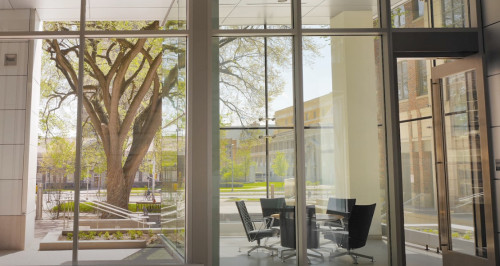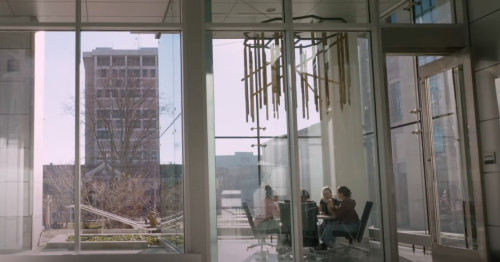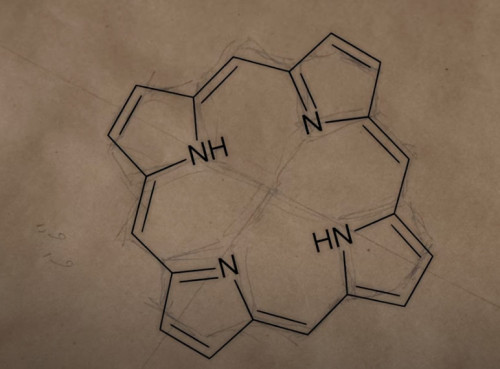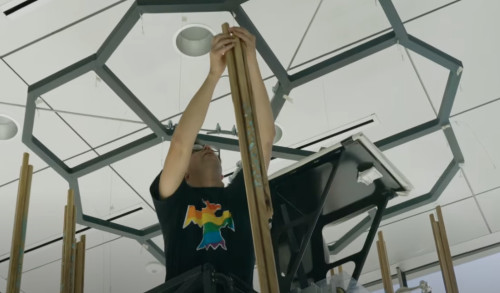Land and campus community connect through new art installation
Video by Paul Escalante
For more than 100 years, a stately elm tree stood in the courtyard outside of the Hector F. DeLuca Biochemical Sciences Building. Fondly known on campus as Elmer, the tree was a meeting place and landmark that connected generations of students and researchers.
Unfortunately, Dutch elm disease infected the tree, and it was harvested in 2018. However, thanks to the vision of local artist Chloris Lowe and preservation efforts of The Wood Cycle of Wisconsin, Elmer has now returned to campus — or at least pieces of him have.

Until 2018, Elmer stood in the courtyard outside the Hector F. DeLuca Biochemical Sciences Building. In 2018, the tree succumbed to Dutch elm disease. University of Wisconsin–Madison

Today, an art installation made with wood from Elmer hangs in a study room, close to the spot where the tree stood for more than 100 years. University of Wisconsin–Madison
Entitled “Connecting Paths,” or “Hogiwe Hirokirere Hii” in Ho-Chunk, the art installation recognizes the Ho-Chunk history of this land — and Lowe’s own heritage — as well as the more recent history of the courtyard as a meeting place.
Several rods, made from Elmer’s wood and dotted with paint fingerprints, hang vertically from a frame above a conference table in a study room on the first floor of the building. Lowe shaped the frame after a porphyrin ring, the same molecular structure at the base of both blood and chlorophyll, the pigment plants use to harness energy from sunlight.

A sketch by Lowe shows the structure of a porphyrin ring. University of Wisconsin–Madison

Lowe invited the campus community to leave their mark on the piece before it was installed. University of Wisconsin–Madison

Lowe hangs rods made of wood taken from Elmer to a frame in the shape of a porphyrin ring. University of Wisconsin–Madison
Lowe describes the porphyrin ring as being where the exchange of energy takes place for humans and plants alike.
“So, you can think about that taking place both inside the tree and also inside us,” Lowe explains. “I set up time for people to come by and put their fingerprints on the piece and be able to show this idea of exchange. People being able to leave their mark.”
Lowe hopes the new installation will help make the study room it now hangs in a meeting place, connecting future generations to each other and the land they stand on as Elmer once did.
Tags: arts, biochemistry, Native Nations




